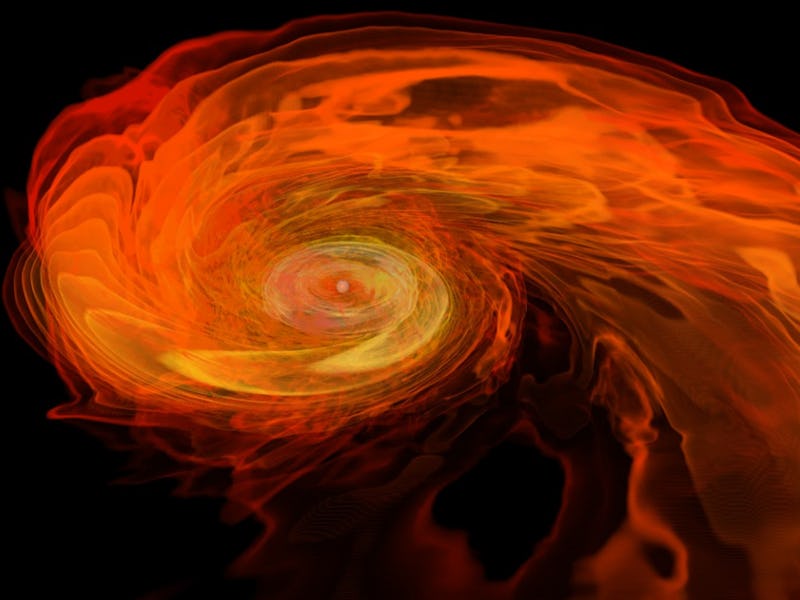What's Behind the Upcoming Gravitational Waves Announcement?
A century-long search may have just come to an end.

Scientists from the Laser Interferometer Gravitational-Wave Observatory (LIGO) will make a major research announcement on Thursday, at 10:30 a.m. Eastern Time, at a press conference hosted by the National Science Foundation. There’s pretty good reason to believe they are going to announce the discovery of gravitational waves — finally ending a 100-year search for one of the most essential, yet elusive, pillars of the modern theory of physics for the universe.
Last month, the theoretical physicist and overall genius Lawrence Krauss tweeted that he had reason to believe scientists at LIGO — a collaboration between scientists at Caltech and MIT — had finally found evidence of gravitational waves — 100 years after Albert Einstein first hypothesized their existence as a way to explain the physics behind general relativity. Krauss wrote on Twitter, “My earlier rumor about LIGO has been confirmed by independent sources. Stay tuned! Gravitational waves may have been discovered!! Exciting.”
If you’re lost, here’s some background information. We (basically) know gravitational waves exist, since we know gravity is a real thing. But we’ve never actually detected those waves — all we have is indirect evidence (you know, an apple falling from a tree, or you tumbling down a flight of stairs).
LIGO began in 2002 with one specific goal: find gravitational waves. This is basically accomplished by scanning for “ripples” in spacetime. These are ultra-small — on the scale of one ten-thousandth the width of a proton. So you need ultra-sensitive instruments to find them.
LIGO’s search has yielded 13 futile years. Last September, however, the project received a significant upgrade to its facilities and instruments. LIGO’s equipment is now three times more sensitive at finding gravitational waves than it was before.
Apparently, it may have only taken a couple weeks for the investments to pay off:
Who exactly did Krauss speak with? That was never quite clear — and he didn’t offer up any names or clues. But someone with his close connections wouldn’t have much of a problem getting in touch with a reliable source. Not to mention that scientists are pretty cautious about making any baseless or poorly supported conjectures — so it’s not unthinkable that Krauss may have learned exactly what the LIGO data entailed.
But there’s evidence that suggests why LIGO is about to announce the most important physics findings of the year. In a leaked email written to his faculty, theoretical physicist Clifford Burgess wrote, “Spies who have seen the paper say they have seen gravitational waves from a binary black hole merger.”
Yeah, that’s right: LIGO physicists might have observed two spiraling black holes basically slam into one-another and merge into one. This would be a surprise, considering LIGO’s biggest target for finding gravitational waves has been a pair of neutron stars. Cool, sure — but not nearly as epic as a two black holes charging at each other like pissed off male rams.
The email goes on to say that the signal had a 5.1 sigma statistical detection — exceeding the 5-sigma standard physicists use to highlight exceptionally robust observations. Both of LIGO’s interferometers, used to look for and measure gravitational waves, found the black hole merger with the correct time delay between them.
Absorb all of this cautiously — we won’t know for certain what exactly LIGO has found until Thursday morning. But if these physicists really have discovered gravitational waves, they are without a doubt a shoo-in for a Nobel Prize, and will have irrevocably changed the rest of the physics world from here on out.